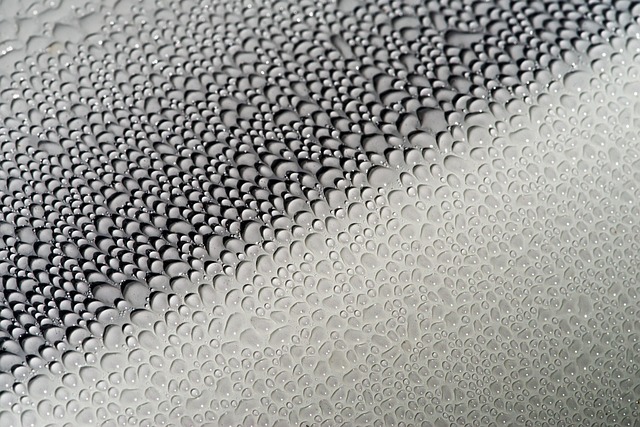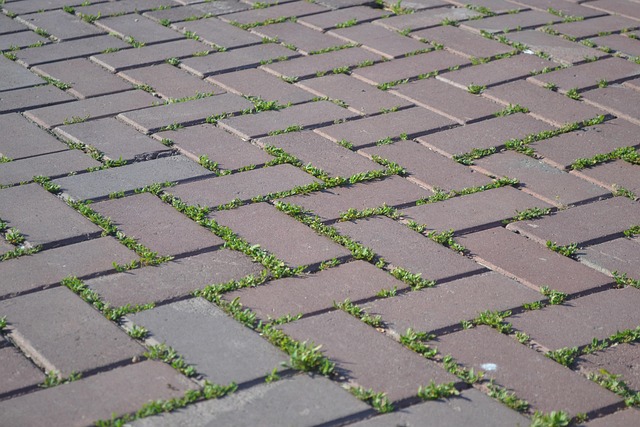Tile sealing is a crucial process for maintaining residential tile floors and walls. By applying sealants, it protects against dirt, stains, moisture, and mold, while enhancing the tiles' appearance with a glossy finish. Regular sealing is essential in high-traffic areas like kitchens. Choosing the right sealant based on tile material, location, and traffic levels ensures optimal protection. Proper application involves thorough cleaning, followed by even sealer distribution using recommended tools. Common mistakes include improper preparation and incorrect sealer selection. Regular reapplication every 1-2 years, daily cleaning, and timely crack repair maintain sealing effectiveness. Tile sealing preserves beauty and longevity in various residential settings.
Tile sealing is an essential step in maintaining the beauty and durability of your home’s tiles. This comprehensive guide delves into the world of residential tile sealing, exploring its benefits for both longevity and aesthetics. We’ll break down what it is, why it matters, and how to choose the right sealant. From step-by-step application tips to common mistakes to avoid, we’ve got you covered. Additionally, discover successful case studies and expert maintenance advice to keep your tiles sealed and protected.
Understanding Tile Sealing: What It Is and Why It Matters

Tile sealing is a crucial process in maintaining the beauty and longevity of residential tile floors or walls. It involves applying a protective layer, typically a sealant or coating, to the tiles’ surfaces. This simple yet effective method serves multiple purposes. Firstly, it fills microscopic pores and gaps on the tile’s surface, preventing dirt, stains, and moisture from penetrating and causing damage over time. By sealing these spaces, tiles remain cleaner for longer periods with minimal effort.
Additionally, tile sealing enhances the overall appearance of tiled surfaces. It creates a smooth, glossy finish that accentuates the natural beauty of the tiles, making them look more vibrant and inviting. This is especially beneficial in high-traffic areas or kitchens where tiles are constantly exposed to water, food spills, and footwear. Regular sealing helps maintain the integrity of these spaces, ensuring they remain aesthetically pleasing and functional for years to come.
Benefits of Residential Tile Sealing for Longevity and Aesthetics

Tile sealing is a crucial step in maintaining the longevity and aesthetic appeal of residential tiles. It acts as a protective barrier, shielding the tiles from moisture, stains, and harsh weather conditions. By applying a high-quality sealer, homeowners can prevent issues like mold growth, grout discoloration, and tile deterioration, which are common problems in humid environments or areas prone to water damage.
Moreover, sealing enhances the overall appearance of tiled surfaces. It fills in pores and microscopic cracks, creating a smooth, glossy finish that showcases the beauty of the tiles. Sealed tiles also repel dirt and stains more effectively, making cleaning easier and ensuring the space retains its vibrant, inviting look for years to come.
Choosing the Right Sealant: Types and Applications

Choosing the right tile sealant is a crucial step in any residential tile sealing project. There are various types of sealants available, each suited for different applications. Silicone sealants, for instance, are popular choices for bathroom and kitchen tiles due to their flexibility, water resistance, and durability. They’re ideal for joints that expand and contract with temperature changes. On the other hand, urethane-based sealants offer superior chemical resistance, making them perfect for areas exposed to harsh cleaning agents or acidic substances.
When deciding on a sealant, consider factors like the tile material (ceramic, porcelain, natural stone), the location (bathroom, kitchen, outdoor spaces), and traffic levels. Some sealants are designed for high-traffic areas, while others are more suitable for decorative tiles where aesthetics take precedence. Always follow manufacturer instructions for application to ensure optimal results in maintaining a water-tight barrier and protecting your tiles from stains and damage over time.
Step-by-Step Guide to Effectively Seal Your Home's Tiles

Sealing your home’s tiles is a straightforward process that can significantly enhance their durability and protect against water damage, stains, and other debris. Start by gathering all necessary tools, including tile sealing products suitable for your tile type, a mop or brush, a bucket, clean cloths, and protective gear. Ensure the room is well-ventilated before beginning.
First, thoroughly clean the tiles using a mild detergent or stone cleaner. Rinse them well to remove any residue. Next, dry the tiles completely with a clean cloth or towel. Apply the tile sealer evenly using a mop or brush, following the manufacturer’s instructions for application rates and timing. Allow the sealer to dry as per recommended guidelines before introducing heavy traffic or subjecting the area to water exposure.
Common Mistakes to Avoid During the Tile Sealing Process

When it comes to tile sealing, there are several common mistakes that homeowners often make during the process. One of the biggest blunders is attempting to seal tiles without properly preparing the surface. This includes not cleaning the tiles thoroughly, which can result in an uneven seal and potential peeling. Always ensure the tiles are free from dirt, grease, or any residual substances before applying a sealer.
Another mistake is using an incorrect sealer for your specific tile type or environment. Different seals have varying levels of durability and protection against moisture, stains, or wear. For instance, a sealer suitable for kitchen tiles might not be adequate for outdoor spaces. Researching and selecting the right sealer for your needs is essential to achieve long-lasting results and prevent premature sealing failure.
Maintenance Tips to Keep Tiles Sealed and Protected

Regular maintenance is key to keeping sealed tiles looking their best and staying protected. After initial sealing, it’s important to reapply a fresh coat every 1-2 years to maintain the seal and prevent wear and tear. Daily cleaning with a mild detergent and warm water helps remove dirt and grime that can break down the seal over time. Avoid using harsh chemicals or abrasive cleaners which can damage the tile surface and compromise the seal.
Additionally, keeping grout lines clean and sealed is crucial. Grout is porous and can absorb moisture and stains, so applying a grout sealer after installation and regularly reapplying as needed will protect it from these issues. Cracks and chips in tiles or grout should be repaired promptly to prevent water penetration and further damage. Regular inspection and quick maintenance will help ensure your sealed tiles remain beautiful and durable for years to come.
Case Studies: Successful Tile Sealing in Residential Settings

In numerous residential settings, tile sealing has proven to be a game-changer in maintaining and enhancing the beauty of tiled surfaces. Case studies across various homes have showcased remarkable results, demonstrating the effectiveness of proper tile sealing. For instance, in a recent project, a family home with heavy foot traffic experienced water damage on their kitchen tiles. After applying a suitable tile sealing solution, not only was the existing tile protected but also provided an impenetrable barrier against future moisture intrusion, ensuring the longevity of the tiles.
Another successful implementation was observed in a historic residence where vintage tiles were in need of restoration. The delicate designs and colors were preserved through specialized sealing techniques, revitalizing the original charm while offering protection from everyday wear and tear. These real-world examples highlight how tile sealing can not only protect against common residential issues like dirt, stains, and moisture but also preserve the aesthetic appeal of tiled areas for years to come.
